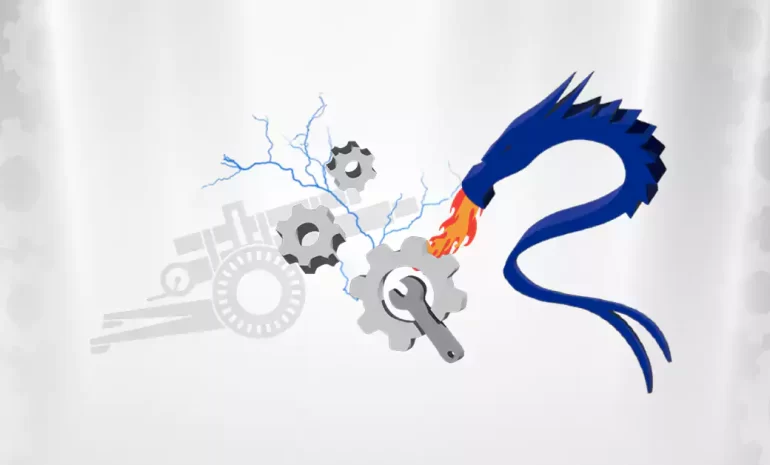






Nowadays, JavaScript is present in different places, and various things are done with it. Although JavaScript is considering to be the core of the web along with HTML and CSS. This high-level and interpretive language is also using as part of the web in creating mobile applications, computer games, desktop programs, etc. Since a long time ago, one of the dreams of JavaScript programmers was to be able to run their codes on the server side, except for the user’s browser. One of the environments that allows programmers to run their JavaScript code on the server side is Node.js. By following this tutorial, you will learn How to Install Node.js on Kali Linux.
Kali Linux is a Linux distribution based on Debian. This operating system is specifically used for tasks such as network analysis and penetration testing. The presence of many tools installed by default on this distribution has made Kali a Swiss army knife for hackers.
Kali Linux, formerly known as Backtrack, claims to be more focused on testing tools than previous versions and has removed unnecessary tools, unlike Backtrack, which had different tools for different purposes.
This operating system is mainly used for advanced penetration testing and security checks. Kali has several hundred tools designed to perform various tasks related to information security such as penetration testing, security research and reverse engineering.
Node.js is a server-side platform based on the Google Chrome JavaScript engine (V8 Engine). Node.js provides everything you need to run a program written in JavaScript. Mr. Ryan Dahl introduced Node.js in 2009 to show that JavaScript is more powerful than just being used for front-end dynamic web pages. In fact, with the help of Node.js, the JavaScript programming language is executed in the server environment instead of in the browser. Node.js allows you to easily and simply write scalable and large networked applications.
JavaScript has been evolving since 1995. Although this language did not have a successful presence on the server side until a long time ago, the efforts made by the programmers faded from the minds of other developers over time. Until the introduction of Node.js in 2009, the tide turned and over time JavaScript was used more and more on the server side.
– High efficiency and flexibility
– Node.js is cross-platform
– Ability to combine with microservices
– The possibility of creating single-page programs (SPA)
– Ability to build RTA programs
– The ability to create a chat room
– The possibility of making online games under the web browser
Before starting the process of installing Node.js on Kali Linux, we suggest you visit the Linux VPS server plans provided on our website, and don’t miss the exceptional opportunity to have a powerful and high-speed server.
In the first step, it is necessary to install all the required tools by running the following command:
sudo apt-get install python g++ make check install fakeroot
Now you need to create the tmp dir with the help of the following command:
src=$(mktemp -d)
Then you need to move to:
cd $src
At this stage, you can download the latest version of Node.js by running the following command:
wget -N http://nodejs.org/dist/node-latest.tar.gz
If you want to use NodeJS LTS 10, you can use the following command:
wget -N https://nodejs.org/dist/v10.16.3/node-v10.16.3.tar.gz
Extract the downloaded file with the help of the following command:
tar xzvf node-latest.tar.gz
You can also extract the NodeJS LTS 10 version by running the following command:
tar xzvf node-v10.16.3.tar.gz
It’s time to go to the directory of the extracted file by running the following command:
ls cd <directory_name_you_know_from_ls_command>/
As:
cd node-v10.16.3/
Run the configuration file using the following command:
./configure
Now the important thing is that you create the .deb for Node using the following command:
sudo fakeroot checkinstall -y --install=no --pkgversion $(echo $(pwd) | sed -n -re's/.+node-v(.+)$/\1/p') make -j$(( $(nproc)+1)) install
Finally, it is necessary to replace [node_*] with the name of the .deb package generated in the previous step in the following command:
sudo dpkg -i node_*
Node js is not only in the field of web applications. It can be used in various projects of Rest APIs, Operating Systems, Robotics, and Microcontrollers, and finally, it’s flourishing to build advanced applications such as drones. In this article, we tried to teach you How to Install Node.js on Kali Linux fully and step by step. If you have any questions in this field, you can send them to us in the comments section.
How useful was this post?
Click on a star to rate it!
Average rating 5 / 5. Vote count: 2
No votes so far! Be the first to rate this post.
 Tags
Tags

Every year, breaches of users' information and privacy cause huge financial and credit losses t...



 Tags
Tags

Kali Linux, a powerful operating system, has emerged as a game-changer for cybersecurity enthusiasts...



 Tags
Tags
What is your opinion about this Blog?








